DE
STIJL (c. 1917-1931)
De Stijl was an artistic movement founded by Dutch artists Theo Van Doesburg, Piet
Mondrian and Bart van der Leck. The ‘De Stijl’ style is pure abstract art.
THEO VAN
DOESBURG (1883-1931)
Doesburg was influenced by Wassily Kandinsky’s 1913 publication ‘Ruckblicke’ (respecitive). It made him realize there was a higher,
more spiritual level in painting that originates from the mind rather than from everyday life, and that abstraction
was the only logical outcome.
"Composition VII:
The Thre Graces" (1917)
Oil on Canvas, (Mildred Lane Kemper Art Museum, St. Louis, MO)
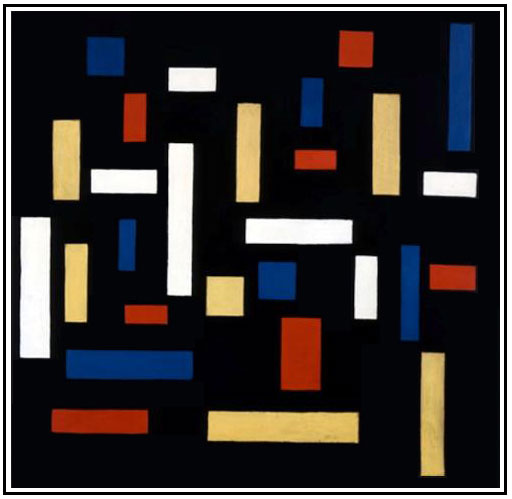
PIET
MONDRIAN (1872-1944)
Modrian developed a non-representational art form which he termed neoplasticis, which
consisted of the three psychological primary colors Red, Yellow and Blue, in addition to
the purity of White and the mystery of Black. Mondrian opposed using diagonal lines (contrary to Doesburg’s
direction). Vertical lines embodied the direction and energy of the sun's rays, whereas the horizontal lines
related to the earth’s movement around the sun.
Mondrian's art was intimately related to his spiritual and philosophical studies. In
1908, he became interested in the theosophical movement launched by Helena Petrovna Blavatsky in the late 19th
century. Some historians have speculated that Mondrian’s ‘mission’ was to create a universal visual language that
was free from any hint of the nationalism that led to the Great War.
“Composition II
in Red, Blue and Yellow” (1930)
Oil on Canvas (private collection)
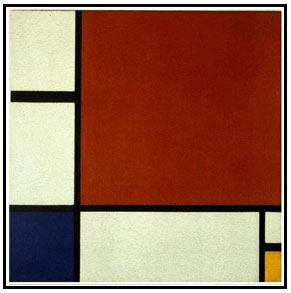
"Composition with
Yellow, Blue, and Red" (1942)
Oil on Canvas (Tate Gallery, London)
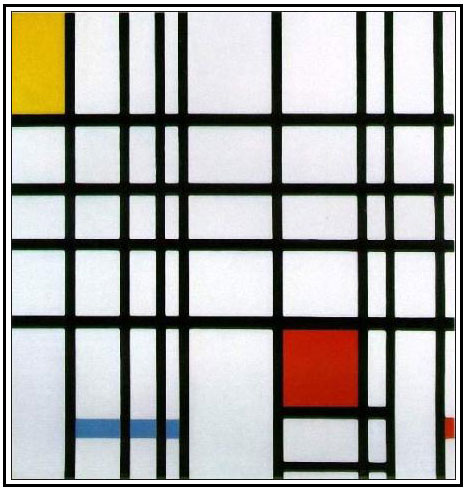
"Composition No.
10" (1942)
Oil on Canvas (private collection)
In ‘Composition Number 10’, Mondrian had reached the full development of his
neo-plastic, non-representational form.
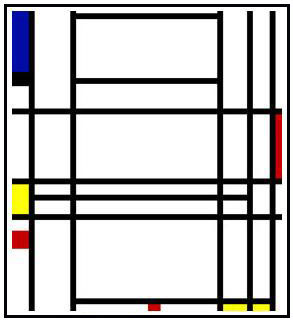
“Broadway Boogie
Woogie” (1943)
Oil on Canvas (Museum of Modern Art, New York City)
"Broadway Boogie-Woogie" is a departure from Mondrian's abstract theme. The work is
inspired by the real-world city grid of Manhattan and the boogie woogie music Mondrian enjoyed to dance
to.
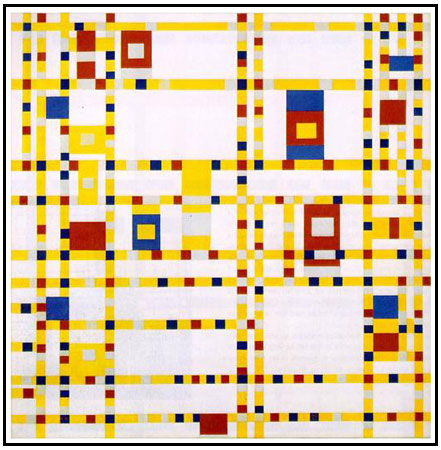
BART VAN DER
LECK (1876-1958)
Bart van der Leck claimed to be the father of the avant-garde movement. In his own
words he said: "Mondrian came to my place one day with Doesburg, whom I had never seen before. When Doesburg
noticed an abstract painting right on the easel, he exlaimed: 'If that is to be the painting of the future, may I
be hanged right now!' Well, a few months later, he was painting in precisely that manner. That's the sort of person
Doesburg was. No ideas of his own. And a cheat in bargain..."
“Composition” (1918)
Oil on Canvas (Tate Gallery, London)

z
| 




